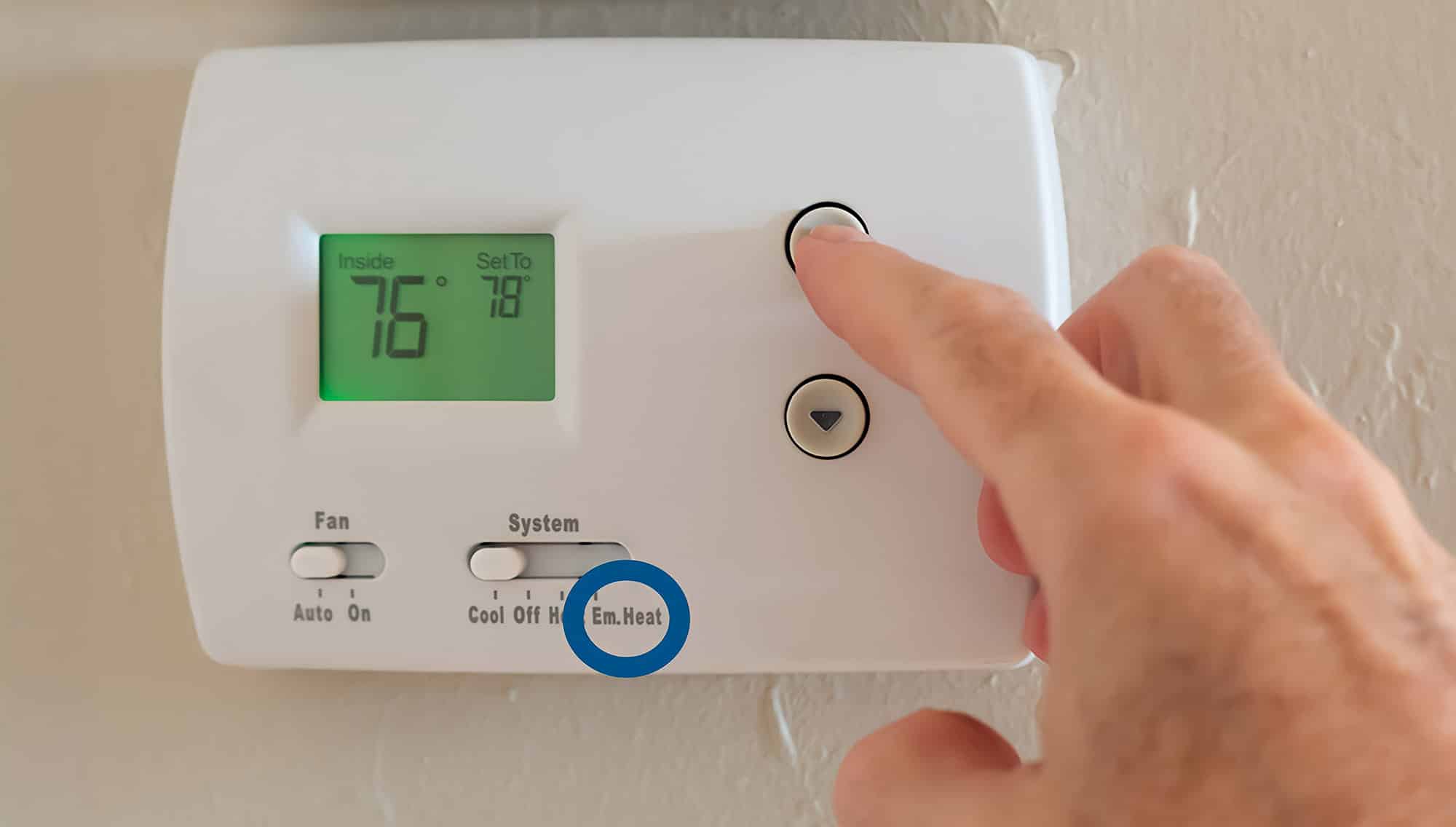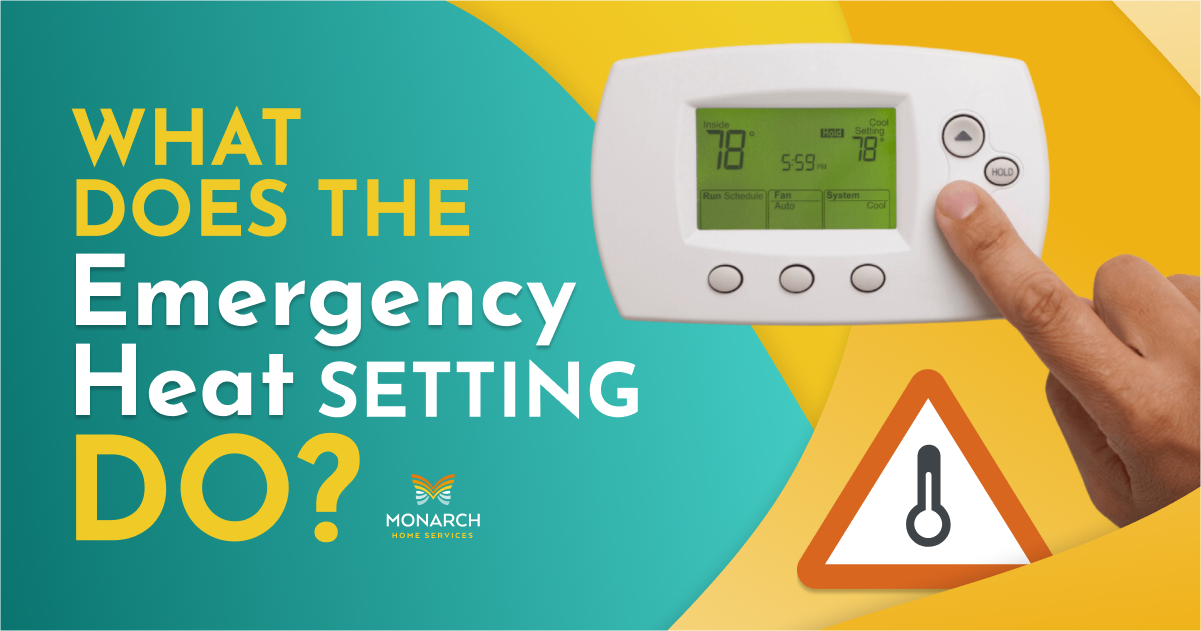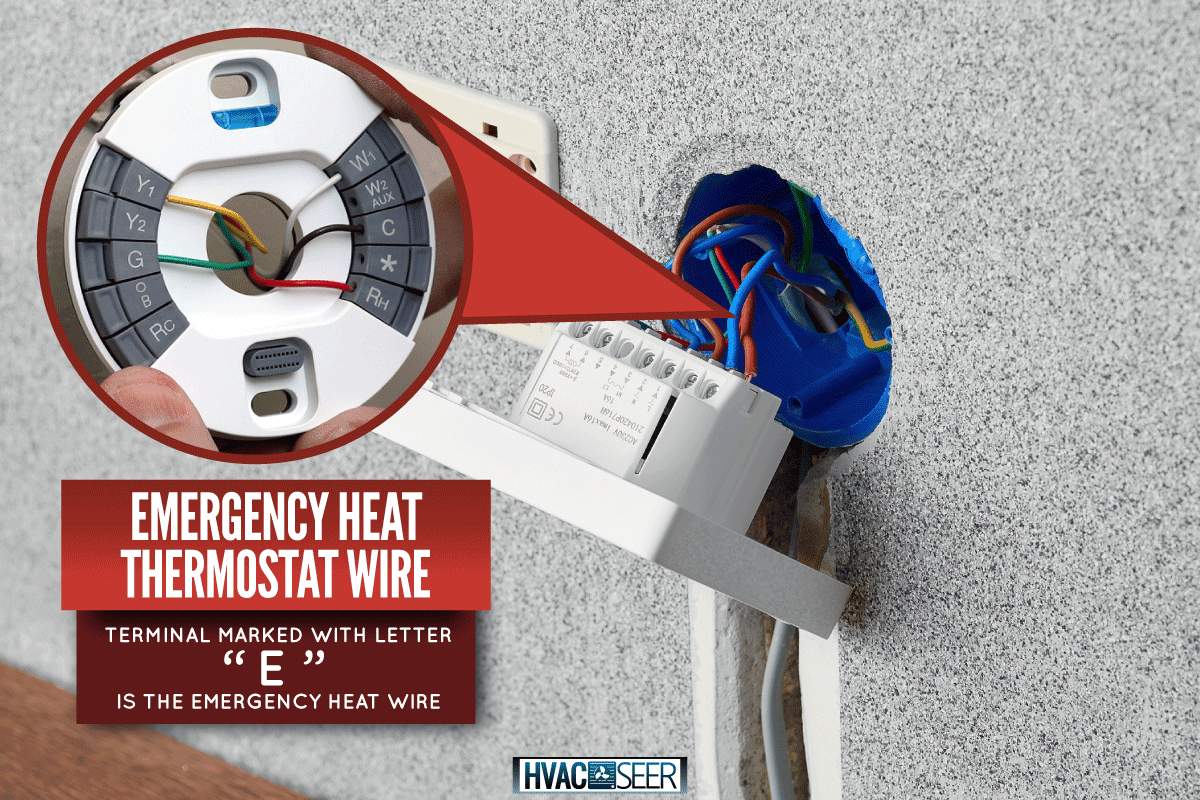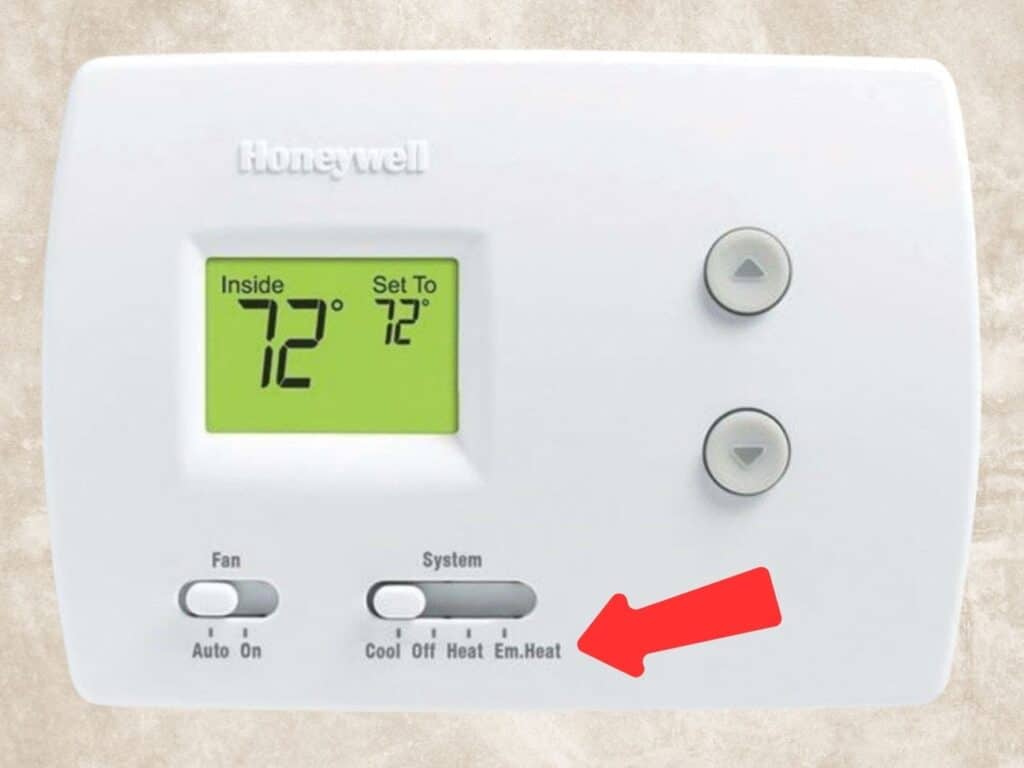What Is Emergency Heat On The Thermostat

Understanding Emergency Heat: A Homeowner's Guide
When winter's chill sets in, ensuring your home remains a warm sanctuary is paramount. Your thermostat, the control center of your heating system, likely features a setting labeled "Emergency Heat" or "EM Heat." But what exactly does this setting do, and when should you use it? This guide provides a comprehensive overview of emergency heat, empowering you to make informed decisions about your home's heating during critical times.
What is Emergency Heat?
Emergency heat is a supplemental heating mode available on heat pump systems. Unlike standard heat, which efficiently transfers heat from the outside air into your home, emergency heat relies on electric resistance heating. Think of it as a giant electric space heater built into your HVAC system. While effective at producing heat, it's significantly less energy-efficient than the heat pump's normal operation.
Key takeaway: Emergency heat is intended for temporary use only, when your heat pump is malfunctioning or unable to adequately heat your home.
How Does a Heat Pump Normally Work?
To understand when emergency heat is necessary, it's crucial to understand how a heat pump functions under normal circumstances. Heat pumps don't create heat; they move it. In winter, even when the outside air feels cold, it still contains some heat energy. The heat pump extracts this energy and transfers it inside. In summer, the process is reversed, removing heat from your home and releasing it outdoors.
Heat pumps are remarkably efficient, boasting Heating Seasonal Performance Factor (HSPF) ratings that reflect their heating efficiency. The higher the HSPF, the more efficient the heat pump. Modern heat pumps often achieve HSPF ratings of 8 or higher. It's important to note that heat pumps become less efficient as outdoor temperatures drop, eventually reaching a point where they can no longer effectively extract sufficient heat.
When to Use Emergency Heat
Emergency heat should only be engaged when your heat pump is no longer functioning correctly. Here are some scenarios where it might be necessary:
*Heat Pump Failure: If your heat pump completely stops working, and you're not getting any heat, engage emergency heat until a technician can diagnose and repair the problem.
*Frozen Outdoor Unit: In extremely cold weather, the outdoor coil of your heat pump can freeze over. While a heat pump has a defrost cycle to address this, if the coil remains frozen despite the defrost cycle, emergency heat might be needed until the ice melts or the system is repaired.
*Significant Temperature Drop: In some rare situations, a sudden and drastic drop in outdoor temperature might overwhelm the heat pump's capacity to maintain your desired indoor temperature. While auxiliary heat (described below) is usually sufficient, emergency heat could provide a temporary boost. However, this is rarely necessary with modern, properly sized heat pumps.
Auxiliary Heat vs. Emergency Heat
Many heat pump systems also have auxiliary heat, often labeled as "AUX Heat" on the thermostat. Auxiliary heat is similar to emergency heat in that it uses electric resistance coils to generate heat. However, auxiliary heat is designed to work in conjunction with the heat pump, providing supplemental heating during periods of high demand, such as when the thermostat is set to a significantly higher temperature than the current room temperature (e.g., after returning from a vacation).
The key difference is that auxiliary heat is automatically controlled by the system and typically operates more efficiently than emergency heat because it's intended for regular use as a supplementary heat source. Emergency heat, on the other hand, is a manual setting intended for emergency situations only.
The Downsides of Emergency Heat
While emergency heat provides a crucial backup, it comes with significant drawbacks:
*High Energy Consumption: Electric resistance heating is notoriously inefficient. Using emergency heat can dramatically increase your electricity bill. It's significantly more expensive than using the heat pump in its normal operating mode.
*Potential for Overheating: Because it's a manual setting, there's a risk of forgetting to turn off emergency heat once the heat pump is repaired, leading to excessive energy consumption and potentially overheating your home.
Cost Considerations
The cost of running emergency heat depends on several factors, including your electricity rate, the size of your home, and the outdoor temperature. However, it's safe to assume that using emergency heat will be significantly more expensive than using the heat pump.
To illustrate, consider a scenario where emergency heat consumes 10 kW of electricity. If your electricity rate is $0.15 per kilowatt-hour (kWh), running emergency heat for 24 hours would cost $36. Over a week, that's $252. This cost underscores the importance of using emergency heat sparingly.
Choosing a Heat Pump System: Key Features and Brands
When selecting a new heat pump system, consider the following factors:
*SEER Rating: The Seasonal Energy Efficiency Ratio (SEER) measures the cooling efficiency of a heat pump. Higher SEER ratings indicate greater efficiency. Look for models with SEER ratings of 16 or higher.
*HSPF Rating: As mentioned earlier, the HSPF rating measures heating efficiency. Aim for models with HSPF ratings of 8 or higher.
*Two-Stage or Variable-Speed Compressor: These features allow the heat pump to operate at different speeds, providing more consistent temperatures and improved efficiency compared to single-stage models.
*Smart Thermostat Compatibility: A smart thermostat allows you to remotely control your heat pump, monitor energy usage, and receive alerts about potential problems.
Popular heat pump brands include:
*Carrier: Known for their high-efficiency and advanced features. Carrier offers a range of models with excellent SEER and HSPF ratings. Example: Carrier Infinity Series.
*Trane: Renowned for their reliability and durability. Trane heat pumps are built to last and provide consistent performance. Example: Trane XV Series.
*Lennox: Offers innovative technology and energy-efficient designs. Lennox heat pumps often feature advanced filtration systems. Example: Lennox SL28XCV.
*Goodman: A more budget-friendly option that still provides reliable heating and cooling. Example: Goodman GSZ16.
*Mitsubishi Electric: Specializes in ductless mini-split heat pump systems, ideal for zoning and individual room control. Known for high efficiency and quiet operation. Example: Mitsubishi Electric M-Series.
Warranties and Maintenance
Most heat pump manufacturers offer warranties on their products. Standard warranties typically cover parts for a certain period (e.g., 5-10 years). Extended warranties, which may cover labor costs, are also available. Read the warranty carefully to understand what is covered and what is not.
Regular maintenance is essential for keeping your heat pump running efficiently and preventing breakdowns. Schedule annual inspections and tune-ups with a qualified HVAC technician. Routine maintenance tasks include cleaning the coils, checking refrigerant levels, and inspecting electrical components.
Troubleshooting Common Heat Pump Problems
Before resorting to emergency heat, try troubleshooting common heat pump problems:
*Check the Thermostat: Ensure the thermostat is set to "Heat" and the temperature is set above the current room temperature.
*Check the Air Filter: A dirty air filter can restrict airflow and reduce the heat pump's efficiency. Replace the filter regularly (typically every 1-3 months).
*Inspect the Outdoor Unit: Remove any debris (leaves, branches, snow) that may be blocking the outdoor unit.
*Check the Circuit Breaker: Make sure the circuit breaker for the heat pump hasn't tripped.
If these steps don't resolve the issue, contact a qualified HVAC technician for assistance.
Conclusion
Emergency heat is a valuable backup feature, but it should be used sparingly due to its high energy consumption. By understanding how emergency heat works, when to use it, and the potential costs involved, you can make informed decisions about your home's heating and ensure a comfortable and efficient living environment throughout the winter months. Remember to prioritize regular maintenance and address any heat pump issues promptly to avoid relying on emergency heat unnecessarily.










